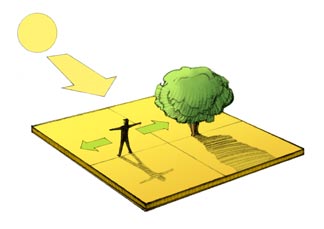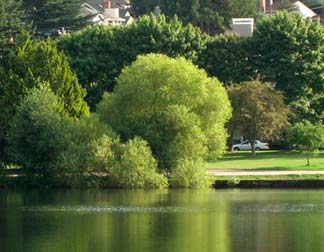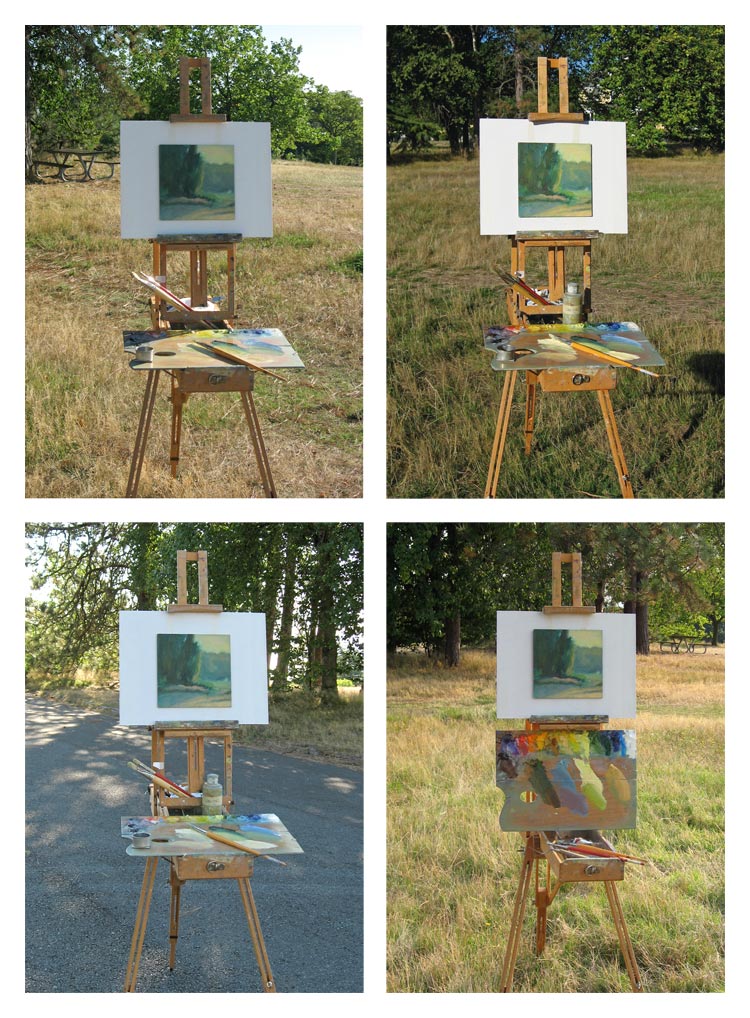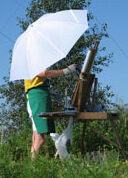 Excerpted from Landscape Painting: Essential Concepts and Techniques for Plein Air and Studio Practice
Excerpted from Landscape Painting: Essential Concepts and Techniques for Plein Air and Studio Practice
Before the first daub of paint is squeezed out of the tube and brush is put to canvas, many plein air painters have already set themselves up for failure. How? By selecting a site that doesn’t translate well into painting. Just because a scene is beautiful or interesting doesn’t necessarily make it a good subject for painting. There are many conditions that must be met in order to maximize your ability to translate the scene from the real world to a two dimensional canvas.
I began painting directly from nature after college, but my first efforts in plein air painting were disappointing. I knew how to draw and paint well, but when I painted outside nothing seemed to work as it had in the studio. Only after several seasons of trial and error did I realize that I was “setting up” my subject improperly. I chose subjects that lacked clear patterns of light and shade to define form. All artists want clear patterns of light and shadow and volume, but in plein air painting, finding them is a matter of putting oneself in the right place at the right time.
The Light Upon the Scene
Painting in nature more than just finding a beautiful scene that you like. Because of our keen depth perception, every scene appears three-dimensional. But not every scene presents its depth in a way that the artist requires for conveying three-dimensionality on canvas or paper. Remember, three-dimensionality in painting and drawing is always an illusion. So we should look for sites that present the visual cues we need to bring depth into our “flat” two-dimensional paintings.
Where the sun is. When the sun is lower in the sky in the morning and in the late afternoon, the light-side and shadow-side of forms are more clearly defined and noticeable. These are ideal times to paint. At midday the defining shadows are diminished. Trees are likely to be top lit and cast shadows are at a minimum. If you rely on these diminished cues, it will be harder to find the form and structure you need. While your depth perception allows you to always perceive the landscape as three-dimensional, there won’t be any cues for the viewer’s depth perception in your painting unless you put them there.

In the spring and summer, any time after sunrise to about 10 am is ideal. The sun is lower in the sky, cross-lighting forms in the landscape with defining shadows. If you like to sleep late, you can catch the crisp shadows a little later in the afternoon, beginning at 3 or 4 pm and as late as 8 pm. Of course, these times vary depending on the season and your latitude. Depending on where you live, winter can be an ideal season, as well (if you can stand painting with your mittens on). Not only does winter offer a unique palette of colors, but the sun is always lower in the sky, never directly overhead, so it casts desirable patterns of light and shade throughout the day.
This scene, observed in the morning, reveals a distinct crosslight. When the light-side and shadow-side of forms are expressed, there is much greater suggestion of volume.
“When approaching nature for depiction, the primary consideration is the station point which will give the best translation of the motif. To get a proper view and idea of any subject, one should study it from several angles. The idea is to locate the easel at a point which will reveal desirable variations, not only of the size of the masses but quality in line, values and color.” – Edgar Payne

Finding the optimal crosslight. Here’s a trick I always use: Stand facing the sun. Then raise your arms so your body forms a “T.” The direction your arms point are the two best directions from which to select your site, give or take, because those directions will give the best view of cross-light and shadow patterns. Avoid painting with the sun directly behind you or directly in front of you.
Where you are. Even if you paint at these times, you can still position yourself so that you won’t be able to take advantage of the light patterns! Even in the morning or late afternoon, you can orient yourself to the subject in such a way that the sun is directly behind the subject (back-lighting) or dirctly in front of the subject (front-lighting), which hides the shadows altogether.
Where the sun will be. Pay attention to where the sun is headed. Say you’ve found a sunny spot filled with interesting shadows. Is the sun just over the top of that building or tree? Is it going to disappear in ten minutes? If so, all your interesting shadows will disappear with it. If the sun about to come up from behind a tree or building, changing the light and color structure of your entire scene?
The Light Upon Your Painting
Make sure the palette and canvas receive equal light. A color appears different under lights of different brightness. An awareness of this is crucial to the painter, especially when working outdoors, where the light cannot be controlled. Imagine your difficulty if every time you mixed a color and applied it to the canvas, it appeared either darker or lighter than you intended. You’d spend all your time trying to compensate for the difference. This is exactly the problem you will face if the light on the your canvas and palette is not the same. The following examples show the various lighting arrangements of the easel and palette.

TOP LEFT – Severe imbalance. In the worst possible arrangement, the palette is sun-struck while the canvas is in shadow, or vice versa. This imbalance makes mixing the desired colors almost impossible. Too much of your time will be spent trying to compensate for the difference.
TOP RIGHT – Canvas and palette in full sun. Not only is this arrangement blinding to look at, judging colors in direct sunlight is next to impossible; colors appear overly saturated. Color choices made in direct sunlight will also look very different under normal, indoor viewing conditions. Although the landscape you are painting can be under full sunlight, you and your painting should not be.
BOTTOM LEFT – Balanced light in soft shade. The most balanced situation is achieved when palette and canvas receive equal light. This is most easily found in soft, diffuse shade, such as under a tree or in the cast shadow of a building or hill. Colors mixed in a balanced, shaded light are more likely to be the color intended when applied to the canvas. Shade is also closer to a normal indoor viewing light. Overcast or cloudy days naturally offer a diffused, balanced light.
BOTTOM RIGHT – Painting and palette on same plane. With a French easel, an easy way to ensure that equal light falls on the canvas and palette is to place the palette upright on the same plane as your canvas. Use a mini bungee cord tied from behind to hold the palette against the frame.
Often you find a beautiful location, but can’t escape from the sun shining directly onto you and your easel. In full sunlight, the easel can sometimes be positioned opposite the sun so that the painting surface casts a shadow onto the palette. You may still be in the sun, but your palette and canvas will have some protection. With French easels, cardboard or an extra canvas panel can be propped vertically behind your painting surface to block some of the stray sunlight.
 Artist’s umbrella. An artist’s umbrella allows you to make your own shade wherever you are. The best umbrellas are white or neutral-colored. A a colored umbrella will create a color cast over the painting. Umbrellas have their risks; in even moderate winds they can turn your painting session into a sailing session.
Artist’s umbrella. An artist’s umbrella allows you to make your own shade wherever you are. The best umbrellas are white or neutral-colored. A a colored umbrella will create a color cast over the painting. Umbrellas have their risks; in even moderate winds they can turn your painting session into a sailing session.
Additional Resources
Landscape Painting: Essential Concepts and Techniques for Plein Air and Studio Practice
Chapter 6, Site Selection
